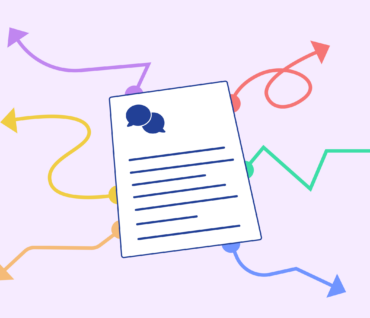
Get Started
Graphite's supplier management tool helps you onboard faster, cut time on risk reviews and streamline supplier validations. Save time and money.
March 8 2023
Getting one step ahead in supplier information management
How to move supplier information management from reactive to proactive.
Procurement teams everywhere attempt to become more proactive while drowning in reactive work. Sound familiar? Implementing change with few resources can be challenging, but it is possible. The key to moving from reactive to proactive is efficient processes with supplier information management.
Reactive Procurement
When businesses are small, procurement is often an afterthought. With no team dedicated to the function, someone usually performs it as a side project. So, by default, the process becomes very reactive.
The business will gather supplier data as needed to pay suppliers and keep the business running. Therefore, a strategy looking at company goals and other risk factors only becomes necessary as the business grows.
If your business is in this phase, it’s crucial to begin by laying a foundation that can be quickly built upon while not taking more resources than the business has to give.
Keep the business running
When a business initiative requires the use of a supplier, it is procurement’s job to find and pay that supplier. The best thing to focus on in this stage is doing this quickly and effectively.
Think of the basic information you need to do business with a supplier. Especially for new or immature organizations, the only information they’ll absolutely need is commercial data– as in, all of the information you’d need to write a check or send a payment via ACH.
Be sure that you set up a process for collecting this data with clearly outlined steps that has the ability to grow as your business grows.
Create supplier information management processes
Collecting and managing supplier data in this reactive stage of procurement can be scattered and unorganized. This makes it very difficult to keep data up to date and easy to find.
However, as businesses expand, the need for supplier data also expands. As a result, procurement teams start to become more complicated. They work to find the best deals, protect the company from risk, and vet suppliers for various factors.
To set your business up for success, you must give the suppliers you work with clear and actionable next steps so both sides know exactly what needs to happen to be onboarded and receive payment.
Proactive Procurement
Once a business is larger and ready to shift toward proactive procurement, there are a few things that must be in place for the transition to be as smooth as possible.
The last thing a procurement team wants is to become a roadblock to the business. However, inefficient processes and low visibility can create bottlenecks and frustration for those trying to bring on new suppliers. If you’re in this stage and have found this true for your team, it’s time to shift your processes.
Smooth processes
Implementing new processes is a difficult change for any team. Begin by finding the areas creating the most significant bottlenecks and shift those processes first. Then, ask questions and understand precisely how requests are made, where data is stored, how it is updated, and each sign-off or stop it has along the way.
Create logical, clear, and easy processes for those you work with to follow. The goal should always be to create the most straightforward, seamless process for your stakeholders to onboard and manage suppliers. When you gain the trust of the business, your job will become much more manageable. In the case of supplier information management, complication doesn’t always mean sophistication. Make sure to be clear and focus on what matters most.
Centralized supplier data
Create a centralized place to store your supplier data that is easy to update and visible to all necessary stakeholders. Often data is not stored in any central location but instead scattered across data centers and individual computers, creating redundant data, inefficient processes, unclear timelines, and many more issues.
Maybe your team is ahead of the curve and already uses a spreadsheet or form to manage and centralize your supplier data. But even this method will likely become unruly as you grow. When your program gets more sophisticated, your team will likely benefit from considering more robust systems such as ERP (Enterprise Resource Planning) or P2P (Procure-to-pay) tools.
Centralizing your supplier data takes time and strategy, but as long as your method is secure and scalable, it will be worth the work it takes to get there.
Moving toward business goals
As your procurement team matures, you’ll find that you can focus on more big-picture initiatives and how procurement can play its part in helping your business reach its growth and financial goals.
Your team can save the business money, help it grow with the help of new suppliers, and push it toward more sustainable and diverse goals.
No matter the size of your team, you can begin working toward proactivity now. Focus on clear processes, efficient data management, and scalability.
What to do next?
If you’re looking for a solution to help your team move from reactive to proactive procurement processes– Graphite might be the first step you can take.
Graphite Connect allows procurement teams to implement a streamlined supplier information management process and centralized supplier data. It can also help you increase visibility, onboard new suppliers, and even keep track of key metrics.
Ready to learn more?
Take your SIM knowledge to the next level by reading our full ebook on the topic.
Read the Ebook




